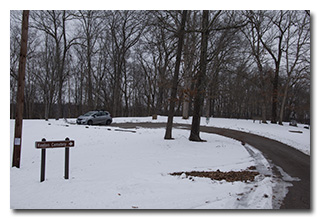
by William Eric McFadden
From the Lake Hope State Park website:
-
Lake Hope State Park offers a truly relaxing, yet rustic getaway from the high speed of modern life. The entire park lies within the Zaleski State Forest in the valley of Big Sandy Run. The park's heavily forested region is marked by steep gorges and narrow ridges with remnants of abandoned mining and iron-producing industries.
The park surrounds the lake and boasts a wooded family campground and a variety of cabins for families and gatherings of all sizes, including the roomy Laurel Lodge. No visit to the park is complete without a stop in the dining lodge for a hearty meal.
From the Zaleski State Forest website:
-
The 27,822-acre Zaleski State Forest is the second largest forest in Ohio's system of state forests.
Zaleski State Forest operates the only state-owned sawmill in Ohio. The mill produces rough sawn lumber for use by Ohio’s state forests and state parks as well as other government agencies.
Historic Moonville Tunnel is located within Zaleski State Forest on the Moonville Rail Trail right-of-way.
Pictures
Description
 On Sunday, January 23, 2022, one member of the Southeast Ohio Radio Adventure Team
performed a successful two-fer activation of Lake Hope State Park and Zaleski State Forest in Ohio as part of the Parks on the Air (POTA; link)
program.
On Sunday, January 23, 2022, one member of the Southeast Ohio Radio Adventure Team
performed a successful two-fer activation of Lake Hope State Park and Zaleski State Forest in Ohio as part of the Parks on the Air (POTA; link)
program.
Eric McFadden, WD8RIF, returned to Keeton Cemetery within Lake Hope State Park on a cold and dreary January morning to perform a two-fer activation of Lake Hope State Park and Zaleski State Forest. This was Eric's 17th activation of Lake Hope State Park (K-1968) and his 18th activation of Zaleski State Forest (K-5455). Eric was accompanied by his little dog, Theo.
Eric arrived at Keeton Cemetery at about 1615 UTC and while Theo-dog explored, Eric quickly set up his 28½' wire vertical on his Jackite 31' telescoping fiberglass mast and drive-on mount, and set up his KX3 inside his car. Eric was on the air at 1633 UTC.
As at his previous visits to Keeton Cemetery, Eric found he had sufficiently-strong cell-signal to allow him to use the POTA Spots website (link) to spot himself and to look for possible park-to-park (P2P) QSOs.
Finding himself a frequency to run on 40m, Eric spotted himself and began calling "CQ POTA". His first QSO came at 1636 UTC with his good friend K4SWL in western North Carolina. QSOs came quickly, with Eric's twentieth QSO coming at 1655 UTC with W5GDW in North Carolina. This run included a P2P QSO with N9MM who was activating Sam Houston National Forest (K-4417) in Texas, a P2P QSO with K0BWR who was activating Little Bean Marsh State Conservation Area (K-7863) in Missouri, and QSOs with operators in North Carolina (5), Texas, Florida, Illinois, Kentucky, New Jersey, Pennsylvania, Ohio (2), Missouri, Virginia, Indiana, and Kansas.
Eric finished his activation by checking POTA Spots for P2P QSO opportunities and at 1658 UTC he made a P2P QSO on 40m with KD3D who was activating Presque Isle State Park (K-1402) in Pennsylvania. This was followd at 1701 UTC with a P2P QSO on 40m with WY1U who was activating Lake Waramaug State Park (K-1689) in Connecticut. Eric's final QSO came at 1704 UTC and was a P2P QSO on 40m with N8TI who was activating Mike Levine Lakelands Trail State Park (K-1513) in Michigan.
In all, Eric made twenty-three QSOs in thirty-one minutes, all on 40m, between the end of set-up and the start of tear-down. All of Eric's QSOs were CW and were made at the 5-watt level.
Eric also submitted his log to the World Wide Flora and Fauna in Amateur Radio (WWFF; link) program for Lake Hope State Park, KFF-1968.
(return)